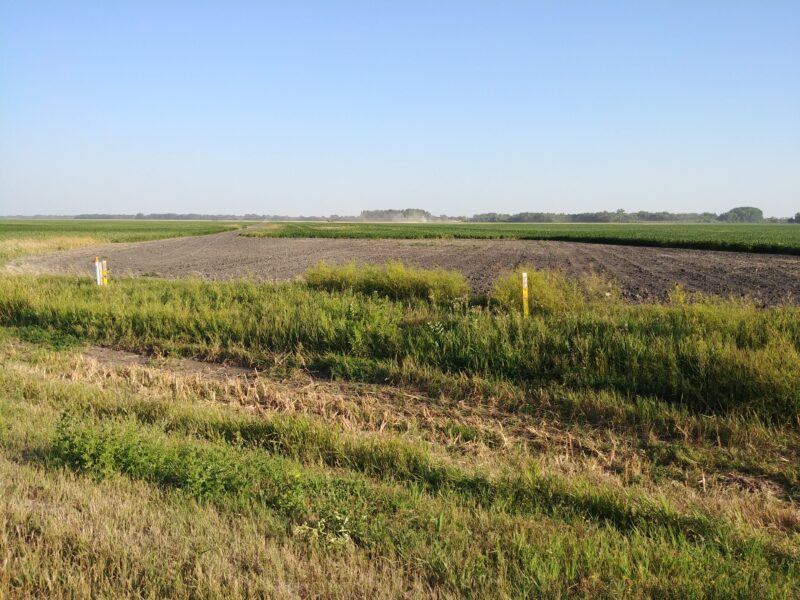Yesterday’s Doctrine, Today’s Inheritance
We know that without the land we wouldn’t have a home, food and water, or the resources we need for a livelihood. We all have stories of how we came to be in a particular place. But rarely do we dig into the historical presumptions beneath these stories which allowed them to occur. For many non-Indigenous people, doing so can sometimes unearth some unsettling truths.
The “Doctrine of Discovery” is a framework of ideas established by the Christian Church that gave European governments moral and legal rights to invade and seize Indigenous lands and dominate Indigenous peoples. The concept dates back to a series of papal edicts in Europe between the 10th and 15th century essentially stating that any land not inhabited by Christians was available to be “discovered,” claimed, and exploited by Christians and “that barbarous nations be overthrown and brought to the faith.”* While its roots are religious, this moral justification for the ‘Right of Discovery’ became codified into secular law as the ongoing legal basis for all European claims to land title in Africa, Australia and the Americas, and the foundation for displacing or killing millions of Indigenous people.
Because this “Doctrine of Discovery” was the foundation for most of the European land title throughout the Americas, many non-Indigenous people are direct or indirect beneficiaries of this doctrine, even if they didn’t take part in the original acquisitions. Many have directly inherited land and resources from earlier times or purchased land for homes and businesses under the general assumption that the Crown has the right to sell the land. While most of the Numbered Treaties between Canada and First Nations did give European Settlers the right to settle and find sustenance from the land, they were not understood by First Nations as land purchases or the cessation of Indigenous title.
Land, Property and Ecology
The Doctrine of Discovery reinforced the profoundly destructive worldview of ‘land is property.’ Legal justifications for the Doctrine of Discovery included the concept of Terra Nullius, which means “Nobody’s land.” Although it was common knowledge there were Indigenous people living on Turtle Island, it was argued those people did not sufficiently ‘use’ that land to the degree that it gave them ownership over it, so the land belonged to ‘nobody.’ Because from a European perspective, they weren’t tilling & farming or making it ‘productive,’ they weren’t fulfilling its ‘God-given purpose.’
In other words, this Doctrine of Discovery not only shaped our idea of Indigenous rights (or lack of rights), but also the Settler concept of the land itself. Land ownership became connected to the notion that land is just a utility—only something worthwhile if it produces food or money for human consumption. And therefore it makes sense to privatize land ownership and cut it up into pieces to be individually bought and sold for profit. And then to extract its resources to drive production and industry. When we privatize ownership of the land, we often see only in part, our own small plot. We often fail to look beyond to see our responsibility to the world as a whole–the air, water, forests and oceans–and thus we lose our connection to the larger ecological system that we depend on.
The Doctrine of Discovery Today
Today’s Canadian governments and economy continue to privilege the rights of corporations to use land for mining, pipelines, and hydroelectricity generation, even when pollution or flooding threatens Indigenous land and livelihoods. While the land provides food and nourishment for all of us, the
primary means of food production today is industrial agriculture, a system that privileges Euro-Canadian interests. The Canadian economic system depends on these resources, even while many practices are unsustainably destructive of the land and many policies favor non-Indigenous communities. We all benefit from the many gifts of the land—food, shelter, energy, livelihoods. Yet the Doctrine of Discovery’s influence continues to perpetuate an inequitable distribution of these gifts and an imbalance of decision-making power that restricts the self-determination of Indigenous peoples.
What Can I Do About it?
The TRC’s calls both the governments and churches in Canada to repudiate the Doctrine of Discovery. To repudiate is not just about denouncing harmful words of the past, but about changing the future. Ideas of what repudiation can look like:
- Listening, learning and growing beyond our assumptions
- Learning about the history of treaties, land transfers, and Indigenous displacement in your area. Talk about this with your friends.
- Looking again at your family stories to discover what may be missing
- Challenging your individual church congregation to consider formal “repudiation” of the Doctrine of Discovery
- Working to undo historic and ongoing violence and human rights abuses committed upon Indigenous peoples
- Naming Land defenders and Water Protectors as such, not as “protestors” or “trespassers.” And supporting their efforts!
- Making reparations. While “giving back” the land may not be an immediate or even a long term solution, symbolic or monetary acts of reparation are also powerful actions. One option could be Share the Gifts-Honour the Treaties.
- Advocate on the local and national level for Indigenous self-determination of land and the Free, Prior & Informed Consent over the use of its resources
- Support the full adoption and implementation of The United Nations Declaration on the Rights of Indigenous People
Resources
* From “Inter caetera” by Pope Alexander VI (May 4, 1493)
Yours, Mine, Ours: Unravelling the Doctrine of Discovery. Ed. Cheryl Woelk, Steve Heinrichs, 2016.
Discovering Indigenous Lands: The Doctrine of Discovery in the English Colonies. Robert J. Miller, Jacinta Ruru, Larissa Behrendt, et.al., 2012.
Settler: Identity and Colonialism in 21st Century Canada. Emma Battell Lowman and Ad- am J. Barker, 2015.


 4 Things you Should Know about Being white,* and Feeling Guilty
4 Things you Should Know about Being white,* and Feeling Guilty
Leave a Reply